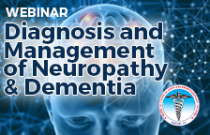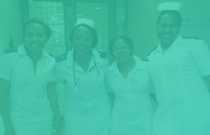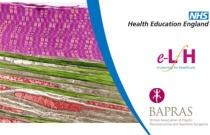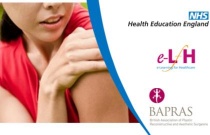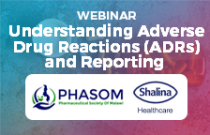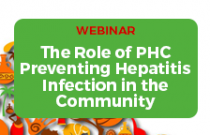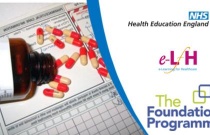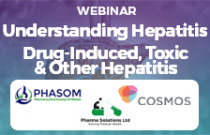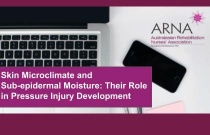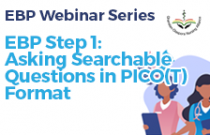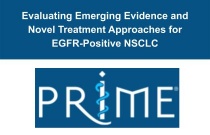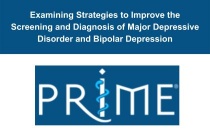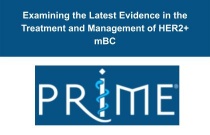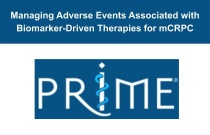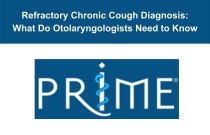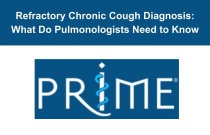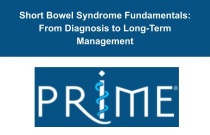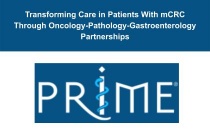Diagnosis and Management of Neuropathy & Dementia
Kyaterekera Paul and Denis Kamoga
The diagnosis and management of Neuropathies and dementia
Development of the Neuromuscular System
George Meakin
Developmental changes in the neuromuscular and other body systems have important effects on the response to muscle relaxant drugs. In this session, we will cover the main physiological factors influencing the use of muscle relaxants in infants and children.
Histology of Muscle and Tendon
Shreya Kulkarni, Richard Green and Sarah Pape
This session outlines the structure and features of tendons and muscles at a macroscopic and microscopic level and describes how these features influence the process of muscle contraction.
Healing Following Muscle and Tendon Injuries
Simon Nicholson and Sahan Eliya
This session describes how muscles and tendons heal following injury and investigates a range of treatment options.
Speech Disturbance Case 01
Lorna Barton
This interactive scenario describes one of a number of possible cases where a patient presents with speech disturbance. As you progress through the scenario you will have the opportunity to apply your knowledge and skills to diagnose and treat this patient. Once you have specified a treatment plan, a simulation of the patient's....
Understanding Adverse Drug Reactions (ADRs) and Reporting
Mr Anderson Ndalama
Adverse Drug Reactions are common and constitute a significant healthcare burden. This lecture aims to uncover knowledge and help audience to deeply understand the Adverse Drug Reactions, how to report them and also the significance of ADR reporting.
The Role of Primary Health Care in Preventing Hepatitis Infection in the Community
Mr Innocent Somboi
Primary healthcare plays a crucial role in the prevention of hepatitis through vaccination, promoting safe practices, and raising awareness. Vaccination against Hepatitis A and B, along with safer sex practices and harm reduction for drug users, are key prevention strategies. Additionally, ensuring safe injection practices, safe....
Prudent Use of Antibiotics (Part 1)
Nick Cooley, Greg Scutt and Paul Wade
The aim of this session is to promote rational use of antibiotics in optimising treatment of patients with infections and reducing emergence of antibiotic resistance. It also highlights factors affecting the route of administration and duration of therapy. Monitoring of antibiotic serum drug levels will be explained. UKFP Cur....
Understanding Hepatitis: Drug-Induced, Toxic & Other Hepatitis – Public Health & Policy Focus
Dr Hanafih Umali Nkhata
Brief description Hepatitis is inflammation of the liver. It is caused by various factors including viral infections, alcohol abuse, etc. This conference aims at enhancing understanding of hepatitis and also promote interprofessional collaboration.
Skin Microclimate and Sub-epidermal Moisture: Their Role in Pressure Injury Development
Sharon Latimer
Pressure injuries are a global patient safety and care quality issue. Pressure injury development involves a complex interplay of individual and environmental factors. Skin microclimate (i.e., temperature, humidity/moisture, and airflow) and sub-epidermal moisture are factors that may also increase the risk of pressure injury de....
Evidence-Based Practice Webinar Series: Step 1: Asking Searchable Questions in PICO(T) Format
Mr Stephen Adomire
Webinar 2 is the second in the multi-part series on evidence-based practice (EBP) in nursing and health care. This session focuses on developing well-structured clinical questions that guide the search for best evidence. Participants will learn to distinguish between background and foreground questions, explore different types o....
Evaluating Emerging Evidence and Novel Treatment Approaches for EGFR-Positive NSCLC
Benjamin P Levy, Stephen V Liu, Carolyn Oxencis, Michele B Kaufman, Lisa Wakefield, Brad Boyette
1.00 Hours
This second webcast of the Hot Topics in Lung Cancer series dives into cutting-edge strategies for managing EGFR-positive non-small cell lung cancer (NSCLC). Join us to explore the latest therapeutic advancements and emerging options for EGFR-targeted. Gain a deeper understanding of the mechanisms of action of EGFR inhibitors....
Examining Strategies to Improve the Screening and Diagnosis of Major Depressive Disorder
Joseph F Goldberg, Michael E Thase, Caro Lopez Martinez, Brad Boyette, Abimbola Farinde, Kristi Kay Orbaugh
0.50 Hours
Major depressive disorder (MDD) and bipolar depression are similar yet distinct disorders that can result in considerable consequences when misdiagnosed. It is more important than ever to be familiar with the clinical presentations of MDD and bipolar depression so that evidence-based screening tools can be utilized and appropria....
Examining the Latest Evidence in the Treatment and Management of HER2+ mBC
Kelly Westbrook, Mothaffar F. Rimawi, Gabriela Andonie, Brad Boyette, Jason Welch
0.50 Hours
Stay up to date with the latest clinical insights on HER2+ metastatic breast cancer in this expert-led, on-demand activity. This module explores emerging first- and second-line therapies, treatment sequencing strategies, and key considerations for special patient populations, including those with brain metastases and comorbiditi....
Expert Strategies to Optimize the Integration of CAR T-Cell Therapy Into Earlier Lines of Multiple Myeloma Treatment
Surbhi Sidana, Doris K. Hansen, Judith R Sands, Annette Sophin, Joyce M Knestrick
1.00 Hours
While the role of chimeric antigen receptor (CAR) T-cell therapy has expanded into earlier lines of therapy for patients with multiple myeloma (MM), providers are faced with new opportunities and challenges to individualizing care. Tune in to hear leading MM experts divulge real-world challenges to the optimal integration of....
Managing Adverse Events Associated with Biomarker-Driven Therapies for mCRPC
Neal Shore, Neeraj Agarwal, Jill Miller, Ricardo Correa, Joyce M Knestrick, Michele B Kaufman
0.50 Hours
Elevate your approach to managing adverse events from biomarker-driven therapies in metastatic castration-resistant prostate cancer (mCRPC) with this concise 30-minute on-demand video. Evaluate the latest safety data on biomarker-driven therapies, explore evidence-based strategies for creating personalized plans, and gain pra....
Meeting the Moment: Improving Care for Patients with HER2-Low Breast Cancer
Jane Lowe Meisel, Nikoletta Sidiropoulos, Brad Boyette, Lisa Wakefield, Ricardo Correa
1.00 Hours
A collaborative approach between oncologists and pathologists is critical for accurate and timely identification of patients with HER2-low breast cancer who are likely to benefit from novel therapy. Tune in to this on-demand activity to gain expert insights from a leading breast oncologist and pathologist for optimizing care for....
Refractory Chronic Cough Diagnosis: What Do Allergists Need to Know
Michael S Blaiss, Ryan J. Atkinson, Brad Boyette, Joyce M Knestrick, Ricardo Correa
0.25 Hours
Chronic cough is one of the most common complaints driving patients to allergy clinics. While it is associated with numerous conditions, refractory chronic cough (RCC) can be the root cause of many patients' symptoms. Tune in to hear a renowned allergist discuss the role of this specialty in identifying patients with RCC. The....
Refractory Chronic Cough Diagnosis: What Do Otolaryngologists Need to Know
Mark R. Gilbert, Ryan J. Atkinson, Brad Boyette, Joyce M Knestrick, Ricardo Correa
0.25 Hours
Refractory chronic cough (RCC) encounters within otolaryngology clinics are rising, resulting in an increased demand for specialists that are skilled at initial assessment and diagnostic workup for this disease. However, recognizing RCC can be a challenging task as patients often have more than one condition commonly associated....
Refractory Chronic Cough Diagnosis: What Do Pulmonologists Need to Know
Peter Dicpinigaitis, Ryan J. Atkinson, Brad Boyette, Joyce M Knestrick, Ricardo Correa
0.25 Hours
Refractory chronic cough (RCC) is a diagnosis of exclusion; as such, many patients experience symptoms for years before the condition is recognized. As the understanding of the pathogenesis of RCC expands, prompting investigations of novel mechanisms of action for suppressing cough, early and accurate diagnosis is of critical im....
Expert Insights on the Clinical Implications of the Latest Clinical Data for Relapsed/Refractory NPM1-Mutated Acute Myeloid Leukemia
Joshua F Zeidner, Jill Miller, Abimbola Farinde, Annette Sophin, Joyce M Knestrick
0.25 Hours
With the emergence of novel menin inhibitor therapies to the AML treatment armamentarium, it is critical to stay ahead of the latest clinical evidence to differentiate emerging menin inhibitors and prepare for their use in clinical practice. Join this Clinical Mic Drop as an AML expert reviews the latest clinical trial data f....
Short Bowel Syndrome Fundamentals: From Diagnosis to Long-Term Management
John K. DiBaise, Donald F. Kirby, Abimbola Farinde, Annette Sophin, Kristi Kay Orbaugh
1.00 Hours
Short-bowel syndrome (SBS) is a rare condition with significant life-long consequences and is the leading cause of chronic intestinal failure. Maintaining optimal nutrition status and minimizing SBS-associated complications can pose significant challenges. Join us for this on-demand video, where you will hear nationally recog....
Transforming Care in Patients With mCRC Through Oncology-Pathology-Gastroenterology Partnerships
Christina S. Wu, Eric A. Pollack, Nikoletta Sidiropoulos, Brad Boyette, Joyce M Knestrick, Mark A Rubin
0.50 Hours
This on-demand 'Clinical Connections' video brings together a multidisciplinary colorectal cancer (CRC) expert panel, including an oncologist, pathologist, and gastroenterologist, to share insights on gaps in CRC care uncovered during a Grand Rounds series conducted at community oncology clinics. Gain in-depth insights into o....
